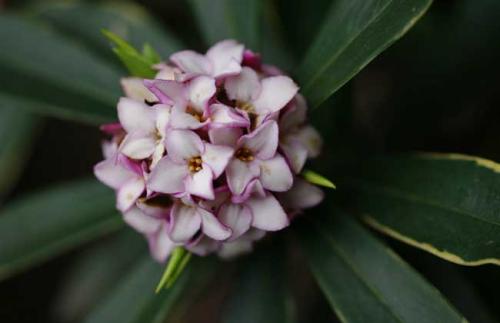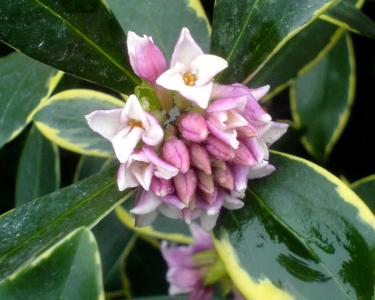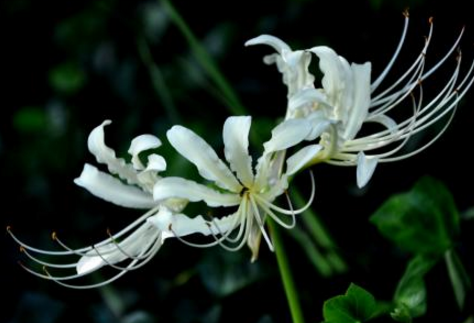Culture methods and matters needing attention of Daphne odorifera in Phnom Penh
First, basin soil
The size of the flowerpot should be moderate, and the soil should be decaying and acidic, which is beneficial to the growth of Phnom Penh.
Second, change the basin
Phnom Penh Daphne generally needs to change the pot after 2 years, which can keep Phnom Penh Daphne to produce beautiful flowers and promote the growth of Phnom Penh Daphne.
Third, watering
Phnom Penh Ruixiang likes the semi-overcast environment, so watering the soil thoroughly, but Phnom Penh Ruixiang is not resistant to water and moisture, so there must be no stagnant water in the basin soil to prevent rotting roots.
IV. Fertilization
Phnom Penh Ruixiang likes fertilizer, but does not like big fat, so apply some thin liquid fertilizer to Phnom Penh Ruixiang.
5. Pruning
Phnom Penh Daphne needs regular pruning to keep the plant shape graceful. If you want to blossom more beautifully in the coming year, you have to cut off the dead branches after the flower.
VI. Disease and pest control
Phnom Penh incense often has insect pests, so it should be prevented as soon as possible. if a disease occurs, it should be dug up immediately and burned with fire.

These are the breeding methods and precautions of Daphne odora in Phnom Penh. Have you learned it? The following editor will introduce to you the main value of Phnom Penh Daphne.
Culture methods and matters needing attention of Daphne odorifera in Phnom Penh
Soil requirements of Daphne odorifera in Phnom Penh
Potted Phnom Penh Daphne has relatively loose requirements for potted soil. It is necessary to choose fertile and humic acid soil and add a small amount of river sand and rotten cake fertilizer into it.
Of course, the soil dug back directly from the outside can be added with a small amount of river sand or large particles of gravel.
Water and fertilizer requirements of Ruixiang in Phnom Penh
The root of Phnom Penh Daphne is fleshy root, usually maintenance should pay attention to control watering, if watering too much, basin soil is too wet for a long time, it is easy to rot the root. The general watering cycle is 10 to 15 days, which is appropriately shortened and lengthened according to the weather conditions.
Phnom Penh Ruixiang prefers fertilizer, which is watered with thin liquid fertilizer about 10 days during the growth period. Before and after flowering, each should be fertilized once, and choose thin cake fertilizer and water.
Light and temperature requirements of Daphne odora L. in Phnom Penh
Phnom Penh Daphne likes the semi-overcast environment, as long as it is normally maintained in the sun in winter and spring, give sufficient light, put the gradual incense in a well-ventilated shady place in summer, and spray water in time when it is hot.
Phnom Penh incense is not cold-resistant and has to be moved indoors in winter. After Frosts Descent, move to the sunny place indoors, keep the temperature above 5 ℃, and keep the basin soil dry in order to survive the winter safely.
Pruning method of Phnom Penh Daphne
Phnom Penh Daphne has strong germination ability and resistance to pruning. In order to control the plant type, it is necessary to pick the heart and top in time to promote branching. After the flower fade, prune according to the plant type, cut off the dead leaves, remove the diseased branches and thin branches, and enhance the light transmittance of the plant.
Matters needing attention in the Culture of Daphne odorifera in Phnom Penh
Phnom Penh Daphne usually changes the pot once every two years, before the flower buds germinate in early spring. Changing the basin is to remove the soil from the outer layer of the root, add new culture soil, after planting, pour water, dry in a cool place for 10-15 days, and then carry out normal maintenance.
The common pests of Phnom Penh Daphne are aphids and scale insects, which must be controlled in time when they are found.
How to raise Daphne odora in Phnom Penh, the breeding methods and matters needing attention of Daphne odora in Phnom Penh
Phnom Penh Daphne is a variety of Daphne odora. It blossoms before the Spring Festival, adding a lot of color to the Spring Festival. Phnom Penh is not only a plant for people to watch, its flowers, leaves, bark and roots can be used as medicine, so Phnom Penh Daphne has high medicinal value. Today, let's take a look at how to raise Phnom Penh Daphne, the breeding methods and precautions of Phnom Penh Daphne.
What is Phnom Penh Ruixiang?
Phnom Penh Daphne belongs to Daphne, Daphne, evergreen shrub. Fleshy roots. Leaves densely whorled oval, about 5--6cm, wide 2--3cm, smooth and thick, leathery, both sides glabrous, dark green surface, leaf back light green, leaf margin golden yellow, petiole thick and short; terminal inflorescence, perianth tube-shaped, upper four-lobed diameter about 1.5cm, each flower is composed of dozens of florets, blooming from outside to inside, flowering for more than two months, during the Spring Festival, the flower color is purple and bright, fragrance is rich.
Second, Phnom Penh Daphne how to raise, Phnom Penh Daphne cultivation methods and points for attention 1, soil: potted Phnom Penh Daphne, pot soil should be fertile and loose, rich in humus with acidic rotten leaf soil, mixed with appropriate amount of river sand and mature cake fertilizer.
2, watering: Phnom Penh Ruixiang root is fleshy, usually maintenance and management should pay special attention to control watering, such as too much watering, basin soil is too wet for a long time, easy to cause rotten roots. After the rain, the stagnant water in the basin must be poured out in time.
3. Sunshine: although Phnom Penh Daphne likes semi-shade, it should be placed in a sunny environment in winter and spring. During the growth period, such as sufficient light and suitable fertilizer effect, it can make Ye Dai and flowers strong, and it should be placed in a cool place with good ventilation in summer. spray water to cool down when hot.
Temperature: after Frosts Descent, Phnom Penh Daphne moved into the sunny part of the room, the room temperature was kept at about 5 ℃, and the watering was controlled; the water content of the basin soil was controlled at about 45% before it could pass the winter.
5. Fertilization: Phnom Penh Daphne prefers fertilizer, and thin liquid fertilizer should be irrigated every 10 days or so in the growing season. It is appropriate to apply sparse pancake fertilizer and water before and after flowering.
6. Insect pests: the main pests that harm Phnom Penh Daphne are aphids and shell insects, which mostly appear in the dry and hot climate and should be controlled as soon as possible. The disease is mainly caused by virus mosaic disease, infected plant leaves appear color spots and deformities, poor flowering and growth stagnation, should be found to root out and burn with fire.
7. Pruning: Phnom Penh Daphne has numerous branches, strong germination, resistance to pruning and pruning after flowering.
8. Cutting technology: choose the cutting substrate with good permeability and pH value of about 5, and generally use fine sand or vermiculite to retain water. Before cutting, cut the base of the cuttings from the middle with a sharp knife, with a length of 1.5-2 cm, and then clip a small pebble in the middle to prevent it from closing, increasing the contact area between the base of the cuttings and the substrate, which is conducive to the rooting of the cuttings. Insert 1 beat 3-1 stick 2 of the cuttings into the matrix to compact the matrix.
9. Post-cutting management: always keep the soil moist after cutting, supply the water needed for cuttings to take root in time, and keep the temperature at 20-25 ℃. At the beginning of the seedling stage, often irrigate with small water and clear water, in order to permeate the matrix, avoid turbid water and flood irrigation, so as to prevent the young leaves from getting muddy and burning. At the same time, pay attention to shade to avoid sun exposure. The root system of Phnom Penh Daphne has fragrance, so it is necessary to avoid the encroachment of ants and earthworms. one. The cuttings can take root in 30-35 days.
A good plant can not only purify the air, but also regulate people's mood. I hope that how to raise Phnom Penh Daphne. The breeding methods and precautions of Phnom Penh Daphne can help friends who like to cultivate Phnom Penh Daphne. If you want to know more about Phnom Penh Ruixiang, please pay attention to the hot agricultural materials.
- Prev

Summer Culture method of Daphne odora L. in Phnom Penh
1. Summer watering Phnom Penh Daphne should keep the potted soil dry in summer and spray water on the leaves of Phnom Penh to cool down. In addition, because of the large rainfall in summer, it is easy to leave stagnant water, so it is necessary to strengthen drainage treatment in time. Otherwise, once there is water in the basin,
- Next

Culture method of Lycoris radiata
1. Soil Lycoris grandiflora is highly applicable to the soil, and it is best to cultivate it in a sandy soil rich in humus and loose air, so that the plants will be more luxuriant. two。 Lycoris radiata needs sufficient light, but all-day or half-day conditions are suitable for its growth, and plants without sunlight will affect flowering.
Related
- Fuxing push coffee new agricultural production and marketing class: lack of small-scale processing plants
- Jujube rice field leisure farm deep ploughing Yilan for five years to create a space for organic food and play
- Nongyu Farm-A trial of organic papaya for brave women with advanced technology
- Four points for attention in the prevention and control of diseases and insect pests of edible fungi
- How to add nutrient solution to Edible Fungi
- Is there any good way to control edible fungus mites?
- Open Inoculation Technology of Edible Fungi
- Is there any clever way to use fertilizer for edible fungus in winter?
- What agents are used to kill the pathogens of edible fungi in the mushroom shed?
- Rapid drying of Edible Fungi

